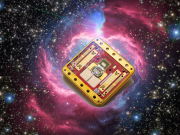Ignorant Soul: NLight Photonics just got $44 million in funding to
develop a “pump laser.” What in the world is that?–Jordan Marks, Whidbey Island
Ignoramus: Excellent question. After talking with a few geeky types and reading some articles with very tiny type, here’s the lowdown:
As you may know, data and voice are commonly transmitted via underground/underwater cables, whose insides are increasingly being made out of fiber-optic threads (basically strands of glass, fractions of a millimeter wide).
These fiber-optic cables travel long distances. But the data/voice electronic signals they’re transporting start to fade after a certain amount of time. To get to their destination, the signals need to be grabbed and repeated. And that grabbing and repeating is the job of a special type of amplifiers, aka repeaters. These repeaters are the size of a cell phone, and via a system called, ahem, “butt coupling,” the repeaters are incorporated into the cable at various points.
Doping the Erb and Aunt EDFA
Poor Aunt EDNA, she got caught doping the Erb and now she’s doing time in a halfway house with Robert Downey, Jr.. What’s that? Oh-h, you said EDFA! Sorry.
The latest line of repeaters on the market are called EDFAs (Erbium Doped Fiber Amplifiers). And that weird name is actually a pretty good description of how the repeaters operate. Let me explain that:
Within the repeaters, is a strand of fiber that has erbium atoms distributed in it, much like the raisins in raisin bread. (Erbium is one of the basic elements; it’s in the Periodic Table). The erbium got into the fiber via a process called “doping” (the incorporation of a carefully controlled amount of impurities into a material).
OK, pay attention, cause this is where the laser pump comes in. Within the repeater, is a laser pump that emits light into the erbium-doped fiber strand.
Why? Because when the laser pump sends certain light beams into the erbium fiber, that light energy is stored in the electrons of the erbium. And when a data signal passes through, it sucks the energy back out of the erbium atoms, thus revitalizing itself. After that, the data signal goes out the other end of the e-doped fiber and continues on its merry way. Kapish?
Pumped Up
NLight Photonics is developing a pump laser it claims is much more powerful than those of its competitors (JDS Uniphase and others). The idea is that NLight’s high-powered lasers will be able to carry the signal over much longer distances, so fewer of them will have to be installed, thus reducing network costs. And NLight is going to be selling the entire EDFA system, not just the laser pump. The company claims it has a more integrated approach than its competitors, which lends itself to easier manufacturing.
Nlight will begin making its first products later this year, trying to get a slice of the market for optical components used in long-distance telecom and cable TV applications. That market is expected to grow from $6.6 billion in 1999 to $23 billion by 2003.
A market that big is easy to get pumed up about!




















